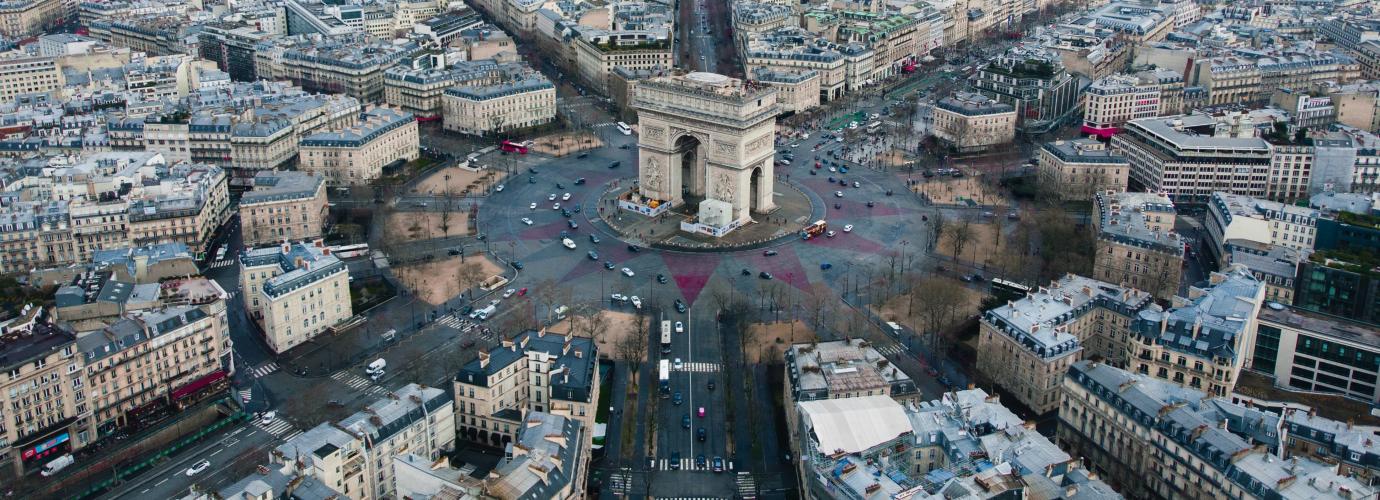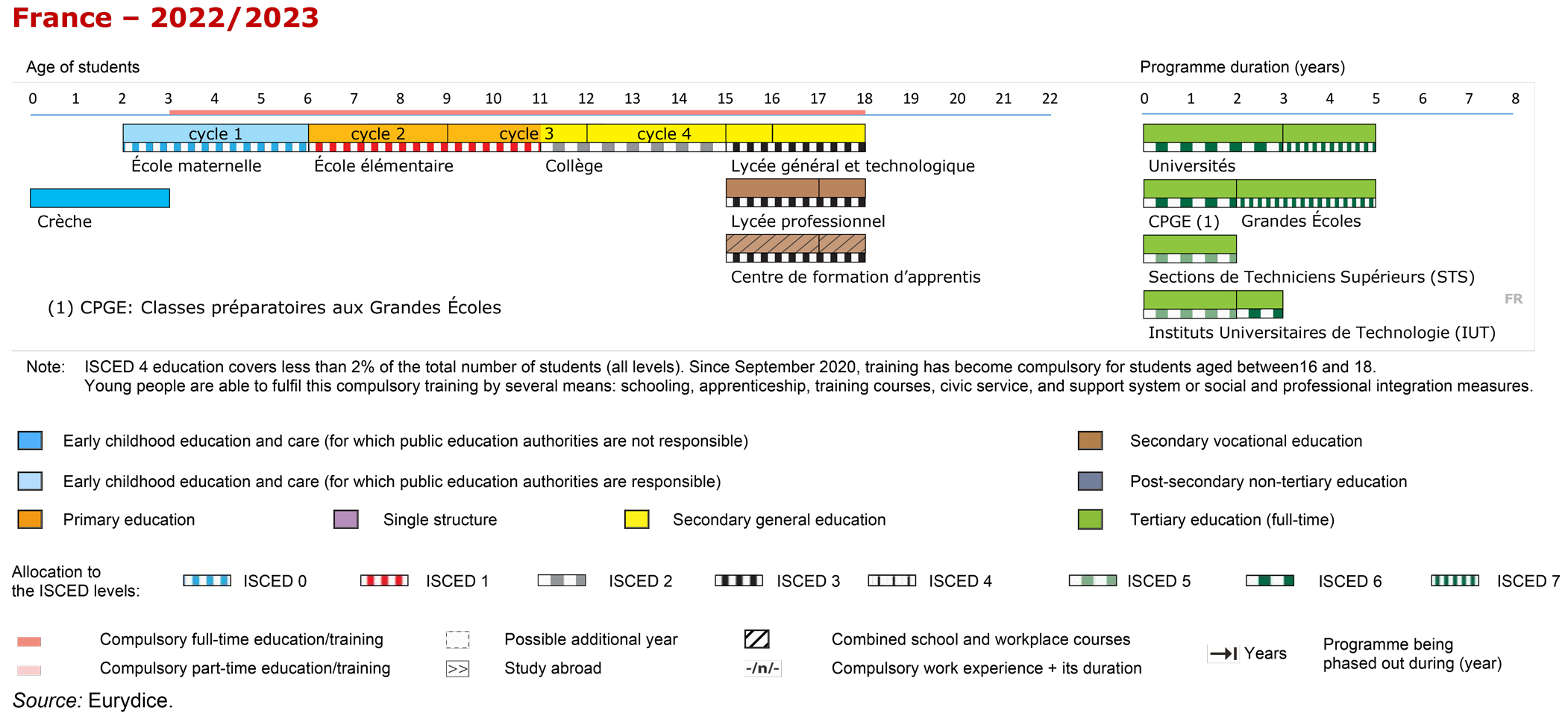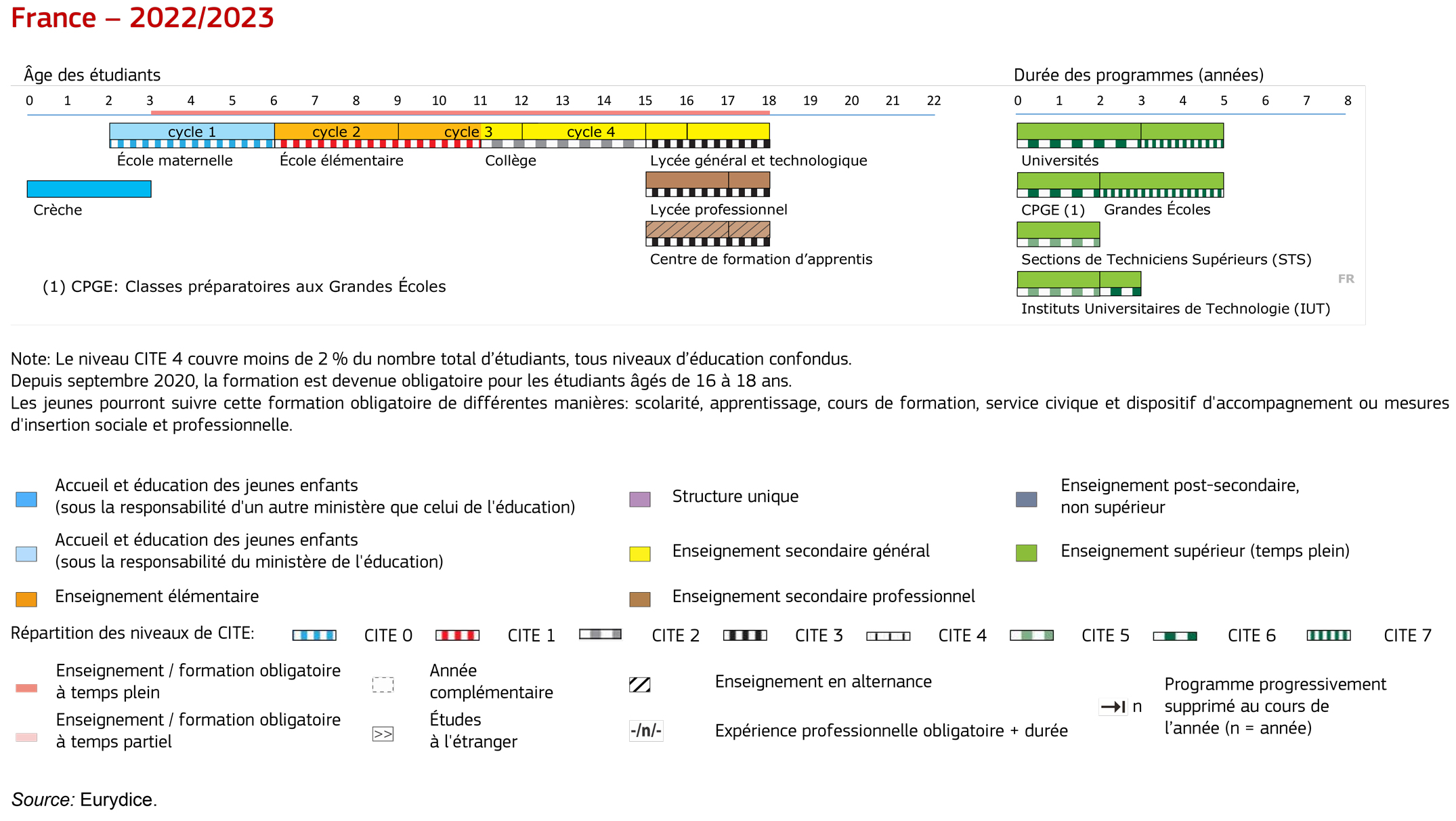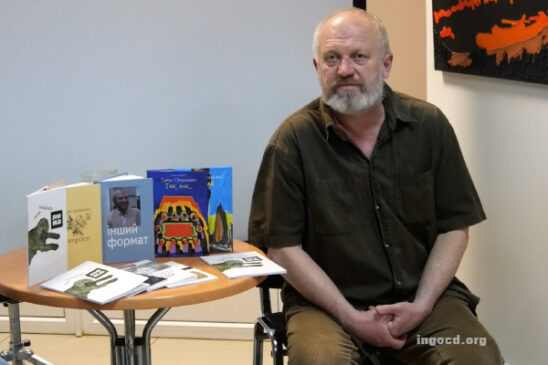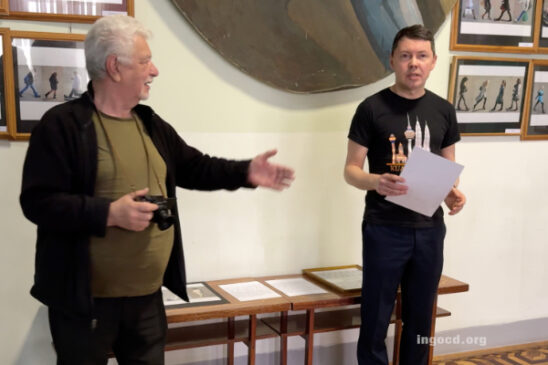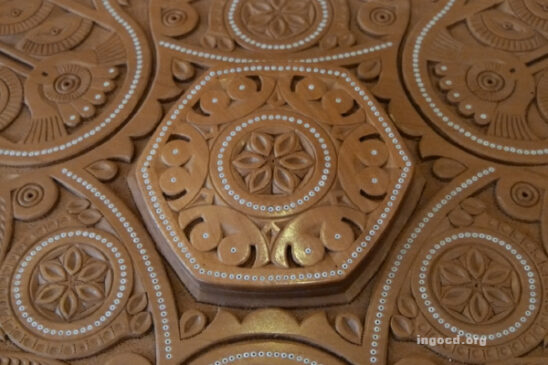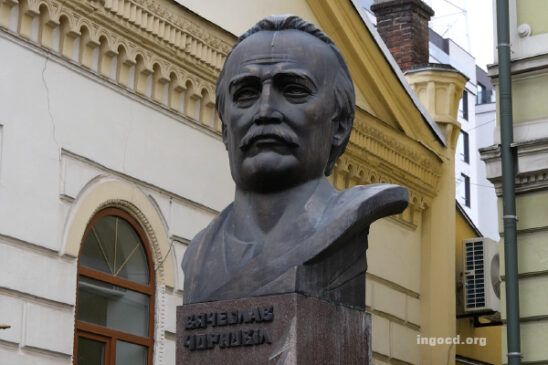France
1. Key features of the Education System
The French education system is characterised by a strong central State presence in the organisation and funding of Education. The French education system is regulated by the Department for National Education, Higher Education and Research. It governs within the framework defined by the Parliament, which states the fundamental principles of education. The State plays a major role in governance, as, by long tradition, the French education system is centralised. The State defines the details of curricula at all education levels; it organises the teachers’ admissions procedure, defines content, recruits teachers who become civil servants, provides them with in-service training; it recruits and trains inspectors, responsible for controlling the quality of the education system; it is the main funding body of the public education system and subsidises “private schools under contract” which receive approximately 20% of school pupils.
Nevertheless, at local level, and since the start of a process of decentralisation of competences in the administration of the educational system in the 1980s, local authorities have been playing an increasingly significant part in governance, ensuring the material operation of the system (construction and maintenance of school buildings, school transport, supply of educational materials, etc.).
The official language for education is French. Public education is secular and free.
France has a long tradition of pre-primary education: for the past twenty years, almost all children have attended école maternelle (nursery school) from three to six, even though it is optional; it is therefore an integral part of the French education system and falls under the responsibility of the Department for National Education, Higher Education and Research, which sets the curricula.
French pupils are taught the same subjects until the age of 15 within a “collège unique” (ISCED 2). The first stage of specialisation occurs at the end of collège (lower secondary education): pupils are streamed to attend either a general, technological or vocational lycées. All prepare pupils to take the baccalauréat in three years, marking the end of secondary education: pupils who pass it obtain the State-issued baccalauréat diploma (general, technological or vocational) which opens up access to higher education and entitles them to enrol at university.
Higher education is characterised by the coexistence of two systems: universities, – public institutions that have an open admissions policy, except for Instituts Universitaires de Technologie (IUT – University institutes of technology) or some classes préparatoires intégrées (integrated preparatory classes) – and a non-university sector, including, in particular, Grandes Écoles (Elite Schools), with a highly selective admissions policy open to baccalauréat holders having attended two years of classes préparatoires, themselves highly selective on entry and during the course. Post-secondary non-tertiary education is marginal in France: the only two diplomas of ISCED 4 that the French education system provides combined amounted to less than 10,000 graduates in 2014.
In 2014, the French education system provided schooling for around 15.4 million pupils, students and apprentices (representing about 23% of the national population). All financing parties combined, the national community effort towards education activities was estimated to 146 billion euros the same year (the equivalent of 6.8% of the Gross Domestic Product) (MENESR-DEPP, RERS 2016, p.12/13 and p.324/325).
2. Stages of the Education System
Education is compulsory between the ages of 6 (which corresponds to the start of primary education) and 16 (which does not represent the end of a cycle – see figure below).
- Pre-primary education (ISCED 02), which is dispensed at “nursery schools” and take children from 2/3 up to 6 years of age. Almost all children attend nursery school from the age of three, even though it is optional. Such schools therefore form – together with the elementary level – an integral part of the French “primary level of education”, which is under the supervision of the Department for National Education, Higher Education and Research.
- Primary education (ISCED 1), which is provided in “elementary schools” and admits children between the ages of 6 and 11. It marks the start of compulsory schooling, and is secular and free of charge when dispensed in State schools. At the end of this 5-year-course, pupils automatically access to the secondary level of education (there is neither standardised tests nor guidance procedures).
- Lower secondary education (ISCED 2), which is provided in collèges for 4 school years (pupils between 11 and 15). Education in collèges is compulsory and common to all pupils. The end of the lower secondary education is sanctioned by the Diplôme national du brevet (DNB); however, admission to upper secondary level is not conditional upon success in the DNB. At the end of collège, the school recommends the appropriate scholastic path to families, basing its recommendation on the pupil’s school reports and particular interests.
- Upper secondary education (ISCED 3), which is dispensed in “general and technological lycées” or in “professional lycées”, which extends over 3 years (pupils between the ages of 15 and 18 years). Upper secondary education provides three educational paths: general path (which prepares pupils for long-term higher studies), technological path (which mainly prepares pupils for higher technological studies) and professional path (which leads mainly to active working life, but also enables students to continue their studies in higher education). The end of upper secondary education is sanctioned by the baccalauréat, and access to higher studies is conditional to its obtention. Pupils at professional lycées can prepare the Certificat d’aptitude professionnelle (CAP – Professional aptitude certificate), a course of study extending over 2 years, after what they can either integrate active working life or prepare the professional baccalauréat in one year.
- Higher education (ISCED 5 to ISCED 8), which is dispensed in higher educational institutions. These institutions have a wide variety of legal statuses that are listed in the French Code of Education. There are two types of short cycles studies (Sections de Techniciens Supérieursand Diplôme Universitaire Technologique). Courses dispensed in French higher education institutions have different aims and conditions for admission, but most of them are structured into three study cycles (Bachelor’s degree, Master’s degree and Doctorate) and in ECTS credits, in compliance with the principles of the Bologna Process.
3. Structure of the National Education System
4.Useful links
While Eurypedia provides comprehensive and comparable information, further information may also be found on the websites of the Department for National Education (Eduscol), Higher Education and Research. For all available statistic information about the French education system please refer to the following websites: Facts and Statistical References, The state of Education and The state of Higher Education and Research.
5. Common European Reference Tools Provided by the Eurydice Network
- National Student Fee and Support Systems
- Organisation of the Academic Year in Higher Education
- Organisation of School Time in Europe (Primary and general secondary education)
- Recommended Annual Instruction Time in Full-Time Compulsory Education in Europe (Presented by grades/stages for full time compulsory education as well as by subject and country.)
- Teachers and School Heads Salaries and Allowances in Europe (Salaries and allowances of teachers and school heads at pre-primary, primary, lower secondary and upper secondary education levels.)
Source: https://eurydice.eacea.ec.europa.eu/national-education-systems/france/overview
Follow us on social media: Facebook, Twitter, Instagram, YouTube.

